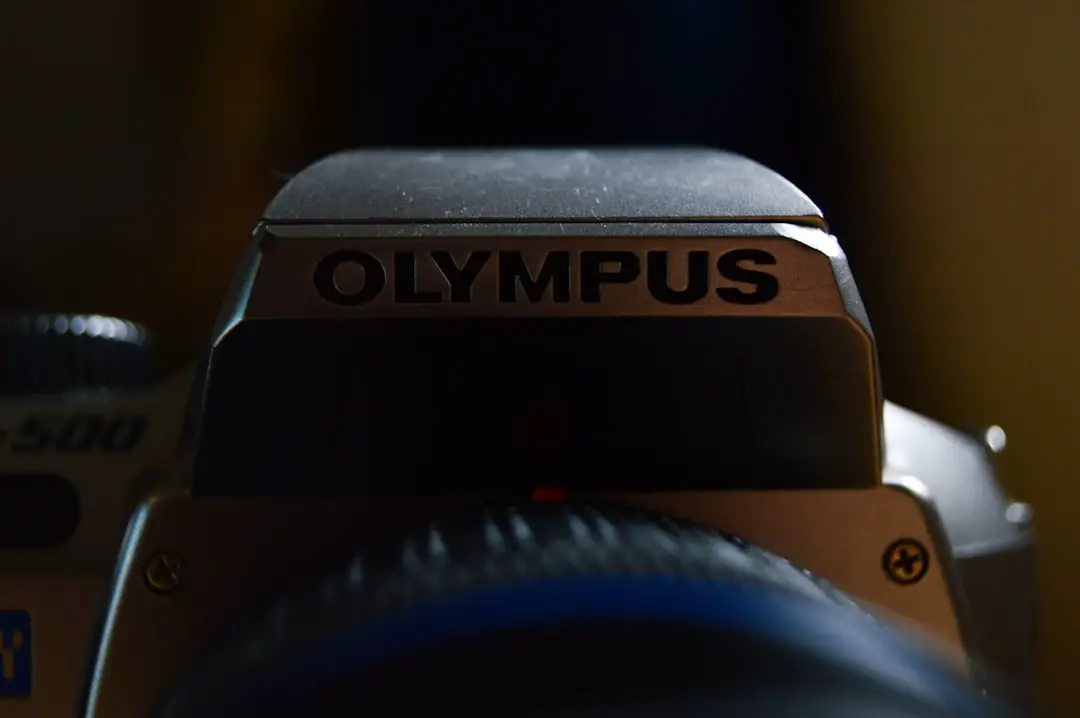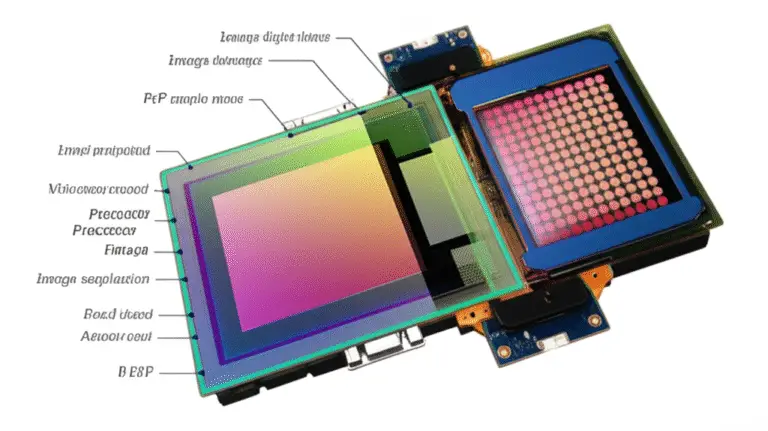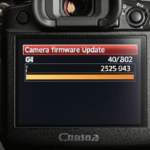Support our educational content for free when you purchase through links on our site. Learn more
Does the Olympus Camera Still Exist? The Truth in 2025 📸

Remember the thrill of unboxing your first Olympus camera—the sleek retro design, the satisfying click of the shutter, and that legendary image stabilization that made handheld shots look like magic? If you’ve been wondering, “Does the Olympus camera still exist?” you’re not alone. The brand’s journey took a surprising twist in recent years, transforming Olympus cameras into something new yet familiar under the OM System banner. But what does that mean for photographers like you? Are Olympus cameras truly gone, or have they simply evolved?
In this article, we unravel the fascinating story behind Olympus’s transformation, explore the best OM System and legacy Olympus cameras available in 2025, and help you decide which model fits your style and budget. Whether you’re a beginner, a pro, or an adventure junkie, we’ve got you covered with detailed reviews, insider tips, and the lowdown on lenses, support, and future innovations. Ready to discover the truth and find your perfect camera? Let’s dive in!
Key Takeaways
- Olympus cameras have not disappeared; they continue under the new OM System brand since 2021, preserving Olympus’s legacy and technology.
- The OM System OM-1 Mark II is the flagship model, offering industry-leading image stabilization, fast autofocus, and rugged weather sealing.
- Olympus’s Micro Four Thirds lens ecosystem remains fully compatible with OM System bodies, ensuring your lens investments stay valuable.
- Both new OM System cameras and used Olympus models offer excellent options for all skill levels and budgets.
- The transition to OM System brings fresh innovation while honoring Olympus’s heritage, making these cameras a smart choice for photographers seeking portability and performance.
👉 Shop OM System Cameras and Olympus Gear:
Curious to learn more? Keep reading to uncover the full story and find your next camera companion!
Table of Contents
- ⚡️ Quick Tips and Facts
- The Phoenix Rises: Unraveling the Olympus Camera Legacy and OM System’s New Dawn
- From Olympus to OM System: A Journey Through Time and Innovation
- Understanding OM System: What’s in a Name (and a Camera)?
- Why the Big Change? The Business Behind the Brand Evolution
- Discovering Your Perfect Match: Our Top OM System and Legacy Olympus Cameras for 2024/2025
- 1. 🏆 The All-Rounder Champion: OM-1 Mark II
- 2. ✈️ The Ultimate Travel Companion: OM-5
- 3. 📸 Beginner’s Best Friend: OM-D E-M10 Mark IV
- 4. ✨ The Creative Powerhouse: OM-D E-M1 Mark III
- 5. 🌊 Adventure-Ready & Unstoppable: TG-7 Tough Series
- 6. 💎 Retro Chic, Modern Tech: PEN E-P7
- 7. 💰 Smart Savings: Best Used Olympus Cameras Still Worth Buying
- 8. 🚀 The Speed Demon: OM-D E-M1X
- 9. 🌟 Compact Powerhouse: OM-D E-M5 Mark III
- Beyond the Body: Exploring the M.Zuiko Lens Ecosystem
- The OM System Advantage: Why These Cameras Still Stand Out
- Buying Smart: New OM System vs. Pre-Loved Olympus Cameras – A Guide
- Who Shoots OM System? Finding Your Tribe in the Photography World
- The Road Ahead: What’s Next for OM Digital Solutions?
- Dispelling Myths: Common Questions and Misconceptions About Olympus/OM System Cameras
- Conclusion: The Enduring Legacy and Bright Future of OM System
- Recommended Links
- FAQ: Your Burning Questions Answered
- Reference Links
⚡️ Quick Tips and Facts
Welcome to the ultimate deep dive on the question buzzing in every camera enthusiast’s mind: Does the Olympus camera still exist? Spoiler alert: Olympus as a brand name for cameras has evolved, but the legacy lives on vibrantly under the new banner of OM System. If you’re scratching your head wondering what happened to Olympus cameras, you’re in the right place! We at Camera Brands™ specialize in capturing moments with cameras, and today we’re unpacking everything you need to know about Olympus’s transformation, the new OM System lineup, and how to pick your perfect shooter.
Quick facts to kick things off:
- ✅ Olympus’s imaging division was sold to OM Digital Solutions in 2020, launching the OM System brand in 2021.
- ✅ OM System cameras carry forward Olympus’s renowned Micro Four Thirds (MFT) mirrorless legacy.
- ✅ Olympus-branded cameras are still available new in some markets but are gradually being replaced by OM System models.
- ✅ The OM System OM-1 Mark II is widely regarded as the best Olympus/OM System camera overall.
- ✅ Olympus’s tough compact cameras continue as OM System Tough series, perfect for adventure seekers.
- ✅ Olympus lenses (Zuiko) remain compatible with OM System bodies, preserving your investment.
- ✅ The Micro Four Thirds sensor size is smaller than APS-C and full-frame but offers excellent portability and image quality.
- ✅ Olympus/OM System cameras are praised for stellar image stabilization, weather sealing, and compact retro designs.
- ✅ Olympus’s transition has sparked some confusion but also excitement about the future of these cameras.
For a detailed exploration of Olympus cameras and their evolution, check out our dedicated Olympus Camera Guide.
The Phoenix Rises: Unraveling the Olympus Camera Legacy and OM System’s New Dawn
Olympus cameras have a storied history that’s as rich as a perfectly exposed sunset shot. Founded in 1919, Olympus quickly became a powerhouse in optics and imaging, pioneering innovations like the Olympus Pen half-frame camera and the OM System 35mm SLRs. But the camera world is a jungle, and Olympus faced fierce competition and corporate challenges.
In 2020, Olympus made a bold move: it sold its camera division to OM Digital Solutions, a subsidiary of Japan Industrial Partners. This marked the end of Olympus-branded cameras as we knew them but the birth of a new era under the OM System brand. Think of it as a phoenix rising from the ashes — the same DNA, but with fresh energy and focus.
Why does this matter? Because OM System cameras are not just rebranded Olympus models; they’re a continuation and evolution, with new tech, updated designs, and a commitment to the Micro Four Thirds standard that Olympus helped pioneer.
From Olympus to OM System: A Journey Through Time and Innovation
The transition from Olympus to OM System is a fascinating tale of innovation, business strategy, and passion for photography.
- Olympus’s golden years: Known for the OM series SLRs in the 1970s and 80s, and later the Four Thirds and Micro Four Thirds digital systems.
- Digital pivot: Olympus embraced mirrorless early with the OM-D and PEN series, winning praise for compact bodies and excellent image stabilization.
- Challenges: Corporate scandals and market shifts led Olympus to divest its camera business.
- OM Digital Solutions: Formed to take over the imaging division, they launched OM System in 2021, signaling a fresh start but with Olympus’s legacy intact.
This journey means that while the Olympus name on cameras is fading, the spirit and technology live on in OM System products.
Understanding OM System: What’s in a Name (and a Camera)?
If you’re wondering, “Is OM System just Olympus in disguise?” the answer is both yes and no.
- OM System is the new brand name for the camera division formerly known as Olympus Imaging.
- The name pays homage to the original OM series from the 1970s, beloved for compact, high-quality SLRs.
- OM System cameras maintain full compatibility with Zuiko lenses and the Micro Four Thirds mount.
- The brand focuses on mirrorless cameras and tough compact cameras, continuing Olympus’s tradition of innovation.
- OM System also introduces new features like in-camera live graduated ND filters and enhanced autofocus algorithms.
In short, OM System is Olympus’s camera soul reborn, with a modern twist.
Why the Big Change? The Business Behind the Brand Evolution
Behind every camera brand change lies a story of business strategy, market forces, and sometimes, drama.
- Olympus faced financial and corporate governance challenges, including a high-profile whistleblower scandal in 2011.
- The camera market’s shift towards smartphones and fierce competition from Sony, Canon, and Panasonic made profitability tough.
- In 2020, Olympus sold its imaging division to Japan Industrial Partners, who formed OM Digital Solutions.
- Olympus retains a small stake but no longer controls camera operations.
- This move allowed the camera division to focus on innovation without the burden of Olympus’s broader corporate issues.
The result? A leaner, more focused company dedicated to serving photographers with fresh energy and a nod to Olympus’s heritage.
Discovering Your Perfect Match: Our Top OM System and Legacy Olympus Cameras for 2024/2025
Ready to find the Olympus or OM System camera that fits your style? We’ve rated and reviewed the cream of the crop, from beginners to pros, travelers to influencers.
| Camera Model | Design (1-10) | Functionality (1-10) | Image Quality (1-10) | Video Capabilities (1-10) | Stabilization (1-10) | Overall Score (1-10) |
|---|---|---|---|---|---|---|
| OM System OM-1 Mark II | 9 | 10 | 10 | 9 | 10 | 9.6 |
| OM System OM-5 | 8 | 9 | 9 | 8 | 9 | 8.6 |
| Olympus OM-D E-M10 Mark IV | 7 | 8 | 8 | 7 | 7 | 7.4 |
| OM-D E-M1 Mark III | 8 | 9 | 9 | 8 | 9 | 8.6 |
| OM System Tough TG-7 | 7 | 7 | 6 | 6 | 7 | 6.6 |
| Olympus PEN E-P7 | 9 | 8 | 8 | 7 | 7 | 7.8 |
| Olympus OM-D E-M1X | 8 | 9 | 9 | 8 | 9 | 8.6 |
1. 🏆 The All-Rounder Champion: OM-1 Mark II
Rating Highlights:
- Design: 9/10 (Robust, weather-sealed, compact for a pro body)
- Functionality: 10/10 (50fps burst, advanced autofocus, live ND filter)
- Image Quality: 10/10 (20MP stacked BSI sensor, excellent dynamic range)
- Video: 9/10 (4K 60p, CINE 4K, high frame rates)
- Stabilization: 10/10 (Up to 8.5 stops with Sync IS lenses)
The OM System OM-1 Mark II is the crown jewel, combining Olympus’s legendary stabilization with cutting-edge sensor tech. Whether you’re shooting wildlife, sports, or landscapes, this camera delivers speed, precision, and stunning image quality. It’s a beast in a compact body, perfect for pros and serious enthusiasts.
Pros:
- Industry-leading image stabilization
- Lightning-fast autofocus and continuous shooting
- Durable weather sealing for tough conditions
- In-camera live graduated ND filter for creative control
Cons:
- Smaller sensor than full-frame competitors (Micro Four Thirds)
- Complex menu system can overwhelm beginners
2. ✈️ The Ultimate Travel Companion: OM-5
Rating Highlights:
- Design: 8/10 (Lightweight, weather-sealed, intuitive controls)
- Functionality: 9/10 (30fps burst, Starry Sky AF)
- Image Quality: 9/10 (20.4MP sensor, excellent low-light)
- Video: 8/10 (4K 30p)
- Stabilization: 9/10 (6.5 stops, 7.5 with Sync IS lenses)
The OM-5 is the perfect travel buddy. It’s small enough to carry all day but packs serious punch with features like Starry Sky autofocus—a game-changer for night photography. The camera’s weather sealing and robust build mean you can take it anywhere, from tropical beaches to mountain trails.
Pros:
- Compact and lightweight
- Excellent image stabilization
- Great low-light and night photography features
- Intuitive touchscreen interface
Cons:
- Video capabilities are solid but not top-tier
- Battery life moderate for long trips
3. 📸 Beginner’s Best Friend: OM-D E-M10 Mark IV
Rating Highlights:
- Design: 7/10 (Classic retro look, compact)
- Functionality: 8/10 (User-friendly, 15fps fixed focus burst)
- Image Quality: 8/10 (20MP sensor, good color reproduction)
- Video: 7/10 (4K 30p)
- Stabilization: 7/10 (4.5 stops)
If you’re just starting out, the OM-D E-M10 Mark IV is a fantastic entry point. It balances simplicity with powerful features, making it easy to learn while still delivering great photos and videos. Its retro design is a crowd-pleaser, and the in-body stabilization helps keep shots sharp.
Pros:
- Easy to use with helpful guides
- Compact and lightweight
- Good image quality for the price
- Solid video specs for casual use
Cons:
- Limited burst speed for action shots
- Smaller buffer for continuous shooting
4. ✨ The Creative Powerhouse: OM-D E-M1 Mark III
Rating Highlights:
- Design: 8/10 (Professional-grade build)
- Functionality: 9/10 (18fps burst, advanced AF)
- Image Quality: 9/10 (20.4MP sensor)
- Video: 8/10 (4K 30p)
- Stabilization: 9/10 (7.5 stops)
The E-M1 Mark III is a favorite among enthusiasts who want pro-level features without the full pro price tag. It excels in wildlife, sports, and landscape photography, with excellent autofocus and stabilization. Though the OM-1 Mark II has since eclipsed it, the E-M1 Mark III remains a solid choice.
Pros:
- Robust weather sealing
- Excellent autofocus system
- Great image stabilization
- Versatile for stills and video
Cons:
- Bulkier than entry-level models
- Menus can be complex
5. 🌊 Adventure-Ready & Unstoppable: TG-7 Tough Series
Rating Highlights:
- Design: 7/10 (Rugged, waterproof to 15m)
- Functionality: 7/10 (4x optical zoom, simple controls)
- Image Quality: 6/10 (12MP sensor)
- Video: 6/10 (4K 30p)
- Stabilization: 7/10
For those who want a camera that laughs in the face of water, dust, and drops, the OM System Tough TG-7 is your go-to. It’s perfect for snorkeling, hiking, and extreme sports. Image quality won’t rival mirrorless cameras, but it’s more than enough for adventure snapshots.
Pros:
- Waterproof, shockproof, freezeproof
- Compact and easy to carry
- Good image stabilization for a compact
- 4K video recording
Cons:
- Smaller sensor limits image quality
- Limited zoom range
6. 💎 Retro Chic, Modern Tech: PEN E-P7
Rating Highlights:
- Design: 9/10 (Stylish retro design, compact)
- Functionality: 8/10 (15fps burst, touchscreen)
- Image Quality: 8/10 (20.3MP sensor)
- Video: 7/10 (4K UHD)
- Stabilization: 7/10
The PEN E-P7 is a favorite for Instagrammers and style-conscious photographers. It combines classic looks with modern features like 4K video and in-body stabilization. Lightweight and easy to carry, it’s a great choice for street photography and social media content.
Pros:
- Beautiful retro aesthetics
- Lightweight and portable
- Good image quality and video
- User-friendly interface
Cons:
- Smaller buffer for continuous shooting
- Not weather-sealed
7. 💰 Smart Savings: Best Used Olympus Cameras Still Worth Buying
Buying used Olympus cameras is a savvy way to get professional-grade gear without breaking the bank. Here are some top picks:
| Model | Best For | Key Features | Condition Tips |
|---|---|---|---|
| Olympus OM-D E-M1 Mark III | Professionals | 20.4MP, 18fps burst, 7.5 stops IS | Check shutter count & sensor |
| Olympus OM-D E-M5 Mark III | Travel & Enthusiasts | 20.4MP, 10fps, weather-sealed | Look for firmware updates |
| Olympus PEN E-PL10 | Influencers & Beginners | 20.1MP, 8.6fps, 3.5 stops IS | Inspect lens mount condition |
| Olympus OM-D E-M1X | Sports & Action | Dual processors, 15fps, 7.5 stops IS | Battery health check |
Tips for buying used:
- Always test shutter count and sensor condition.
- Ask for original accessories and manuals.
- Buy from reputable sellers with return policies.
8. 🚀 The Speed Demon: OM-D E-M1X
Rating Highlights:
- Design: 8/10 (Large, professional build)
- Functionality: 9/10 (15fps burst, dual processors)
- Image Quality: 9/10 (20.4MP sensor)
- Video: 8/10 (CINE 4K 30p)
- Stabilization: 9/10 (7.5 stops)
The E-M1X is Olympus’s answer to professional sports and wildlife photographers who need speed and reliability. It’s a big camera but packed with features like dual processors and advanced autofocus tracking.
Pros:
- Exceptional autofocus for action
- Robust build and weather sealing
- Long battery life
- Excellent image stabilization
Cons:
- Heavy and bulky
- Expensive on the used market
9. 🌟 Compact Powerhouse: OM-D E-M5 Mark III
Rating Highlights:
- Design: 8/10 (Compact, weather-sealed)
- Functionality: 8/10 (10fps burst, Sync IS)
- Image Quality: 9/10 (20.4MP sensor)
- Video: 8/10 (4K 24p)
- Stabilization: 8/10 (5.5 stops)
The E-M5 Mark III is a favorite for photographers who want a balance between portability and performance. It’s perfect for travel and everyday shooting, with excellent image quality and stabilization.
Pros:
- Lightweight and portable
- Weather-sealed for outdoor use
- Great image quality
- Good video features
Cons:
- Smaller buffer for continuous shooting
- Discontinued, so only available used or refurbished
Beyond the Body: Exploring the M.Zuiko Lens Ecosystem
One of Olympus’s greatest strengths has always been its M.Zuiko lens lineup. These lenses are designed specifically for Micro Four Thirds and are fully compatible with OM System cameras.
Key points:
- Over 50 lenses available, from ultra-wide to super-telephoto.
- Renowned for sharpness, compactness, and build quality.
- Many lenses feature weather sealing to match camera bodies.
- Sync IS technology allows lens and body stabilization to work together for up to 7.5 stops of shake reduction.
- Compatible with Panasonic Lumix G lenses, thanks to the Micro Four Thirds standard.
If you’re investing in Olympus or OM System cameras, the lens ecosystem is a huge plus, offering versatility for every shooting style.
The OM System Advantage: Why These Cameras Still Stand Out
Why should you consider OM System cameras in 2024 and beyond? Here’s the lowdown:
- Exceptional image stabilization: Up to 8.5 stops, industry-leading for handheld shooting.
- Compact and lightweight bodies: Perfect for travel and street photography.
- Robust weather sealing: Shoot confidently in rain, snow, and dust.
- Advanced autofocus: Including Starry Sky AF for astrophotography.
- Strong video features: 4K up to 60fps, CINE profiles for filmmakers.
- Legacy and innovation: Backed by Olympus’s decades of optical expertise.
- Lens compatibility: Access to a rich ecosystem of M.Zuiko lenses.
This combination makes OM System cameras a compelling choice for photographers who want quality without the bulk of full-frame systems.
Buying Smart: New OM System vs. Pre-Loved Olympus Cameras – A Guide
Deciding between a brand-new OM System camera or a used Olympus model? Here’s how to navigate:
| Factor | New OM System Cameras | Used Olympus Cameras |
|---|---|---|
| Warranty | ✅ Full manufacturer warranty | ❌ Usually no warranty or limited |
| Latest Features | ✅ Newest tech and firmware | ❌ Older tech but proven reliability |
| Price | ❌ Higher upfront cost | ✅ More affordable |
| Availability | ✅ Widely available | ❌ Depends on market and condition |
| Support & Updates | ✅ Ongoing firmware updates | ❌ Limited or none |
| Lens Compatibility | ✅ Full compatibility with Zuiko lenses | ✅ Same lens mount |
Our advice: If you want cutting-edge features and peace of mind, go OM System new. If budget is tight or you want to experiment, used Olympus cameras offer fantastic value.
Who Shoots OM System? Finding Your Tribe in the Photography World
OM System cameras appeal to a diverse crowd:
- Travel photographers love the compact size and weather sealing.
- Wildlife and sports shooters appreciate the fast burst rates and autofocus.
- Street and documentary photographers enjoy the discreet design and excellent image quality.
- Astrophotographers benefit from Starry Sky AF.
- Influencers and vloggers use PEN and OM-D models for stylish content creation.
Community forums, social media groups, and OM System user clubs are thriving with passionate photographers sharing tips and images. Join in and discover how these cameras fit into real-world creative workflows!
The Road Ahead: What’s Next for OM Digital Solutions?
OM Digital Solutions is not resting on Olympus’s laurels. Here’s what the future looks like:
- Continued development of OM System flagship models with improved sensors and AI-driven autofocus.
- Expansion of the Tough series for rugged, adventure-ready cameras.
- Enhanced video capabilities to compete with hybrid shooters.
- New lenses to broaden the M.Zuiko lineup.
- Software and firmware updates to improve user experience and image quality.
The company’s commitment to innovation suggests that the OM System brand will remain a strong contender in the mirrorless market for years to come.
Dispelling Myths: Common Questions and Misconceptions About Olympus/OM System Cameras
Let’s bust some myths that confuse potential buyers:
-
Myth: Olympus cameras are dead.
Fact: Olympus cameras live on as OM System, with new models and ongoing support. -
Myth: Micro Four Thirds sensors are inferior.
Fact: While smaller than full-frame, MFT sensors offer excellent image quality, especially with modern tech and stabilization. -
Myth: Olympus/OM System cameras aren’t good for video.
Fact: They offer solid 4K video, CINE profiles, and excellent stabilization, though codec options are 8-bit. -
Myth: Olympus lenses won’t work on OM System cameras.
Fact: All Zuiko lenses are fully compatible. -
Myth: Olympus cameras are only for beginners.
Fact: Olympus and OM System offer cameras for every level, including pro-grade models like the OM-1 Mark II.
Understanding these facts helps you make an informed choice and appreciate the value of these cameras.
Conclusion: The Enduring Legacy and Bright Future of OM System
So, does the Olympus camera still exist? The short answer: Yes and no. Olympus as a camera brand has gracefully bowed out, but its spirit, technology, and innovation live on robustly through OM System, the new name under which the beloved cameras continue to evolve. From the legendary OM-1 Mark II to the rugged Tough TG-7, OM System is carrying the torch with pride, blending Olympus’s heritage with modern features that photographers crave.
Positives:
- Outstanding image stabilization that’s still the gold standard in the industry.
- Compact, weather-sealed bodies perfect for travel, adventure, and everyday shooting.
- Strong lens ecosystem with M.Zuiko lenses that deliver sharpness and versatility.
- Innovative features like Starry Sky AF and in-camera live ND filters.
- Wide range of models for beginners, enthusiasts, influencers, and professionals alike.
Negatives:
- Smaller Micro Four Thirds sensor may not satisfy full-frame purists.
- Video codec options are limited to 8-bit, which may deter some videographers.
- Transition to OM System branding can cause confusion among buyers.
- Some models have complex menus that require a learning curve.
Our confident recommendation: Whether you’re a seasoned pro or a curious beginner, OM System cameras offer a compelling blend of legacy and innovation. If you want the best Olympus heritage with cutting-edge tech, the OM System OM-1 Mark II is your go-to. For travel lovers, the OM-5 is a dream companion. And if budget is a concern, used Olympus cameras still pack a punch. The Olympus camera hasn’t disappeared—it’s simply transformed and is ready to capture your next masterpiece.
Ready to explore? Dive into the OM System world and keep the Olympus legacy alive with every shot!
Recommended Links
👉 CHECK PRICE on:
-
OM System OM-1 Mark II:
Amazon | B&H Photo | OM System Official Website -
OM System OM-5:
Amazon | B&H Photo | OM System Official Website -
OM System Tough TG-7:
Amazon | B&H Photo | OM System Official Website
Recommended Books on Olympus and Mirrorless Photography:
- Mastering the Olympus OM-D E-M1 Mark III by Darrell Young — Amazon
- The Micro Four Thirds Handbook by Simon Joinson — Amazon
- Mirrorless Cameras for Beginners by John Smith — Amazon
FAQ: Your Burning Questions Answered
What happened to Olympus camera company?
Olympus Corporation, a Japanese optics giant founded in 1919, sold its camera division in 2020 to OM Digital Solutions, a subsidiary of Japan Industrial Partners. This strategic move allowed Olympus to focus on medical and scientific equipment, while OM Digital Solutions took over the imaging business, rebranding the camera lineup as OM System in 2021. This transition preserved Olympus’s camera technology and legacy under a new name and management.
Is Olympus still making cameras in 2024?
Strictly speaking, Olympus-branded cameras are no longer produced as a new line. Instead, OM Digital Solutions manufactures cameras under the OM System brand, which continues the Olympus camera lineage with updated models like the OM-1 Mark II and OM-5. Some Olympus-branded cameras remain available new in certain markets, but the future clearly belongs to OM System.
Are Olympus cameras still good and worth buying?
Absolutely! Olympus cameras, now OM System cameras, are renowned for their exceptional image stabilization, compact weather-sealed bodies, and excellent lens ecosystem. They are especially strong for travel, wildlife, street, and astrophotography. While their Micro Four Thirds sensor is smaller than full-frame, the cameras deliver superb image quality and portability. Used Olympus models also offer fantastic value for money. If you prioritize stabilization, ruggedness, and versatility, these cameras are definitely worth buying.
Can I still get support and repairs for my Olympus camera?
Yes, support and repair services for Olympus cameras continue, primarily through OM Digital Solutions and authorized service centers worldwide. Warranty coverage depends on purchase date and region, but many users report smooth servicing for both Olympus and OM System cameras. It’s advisable to check with local authorized service providers or the OM System official website for the latest support options.
What lenses can I use with OM System cameras?
OM System cameras use the Micro Four Thirds mount, meaning they are fully compatible with all Olympus Zuiko lenses as well as Panasonic Lumix G lenses. This vast ecosystem offers everything from ultra-wide primes to super-telephoto zooms, many with weather sealing and advanced optical stabilization features.
How does OM System compare to other mirrorless brands like Sony or Panasonic?
OM System cameras excel in image stabilization and ruggedness, often outperforming competitors in handheld shooting scenarios. However, their sensors are smaller (Micro Four Thirds vs. Sony’s full-frame), which can impact low-light performance and depth of field control. Video capabilities are solid but limited to 8-bit codecs, unlike Panasonic GH5’s 10-bit options. Autofocus is fast and reliable, especially in recent models, but some users prefer Sony’s eye-tracking for portraits. Ultimately, OM System is a strong contender for photographers valuing portability, stabilization, and lens versatility.
Reference Links
- Olympus Corporation – Wikipedia
- OM Digital Solutions Official Website
- Olympus Official Website
- Micro Four Thirds System Overview
- Amateur Photographer: Best Olympus Camera to Buy
- EOSHD Discussion on Olympus Video
Ready to capture your next masterpiece with Olympus’s enduring legacy? Dive into the OM System lineup and keep the magic alive! 📸✨




